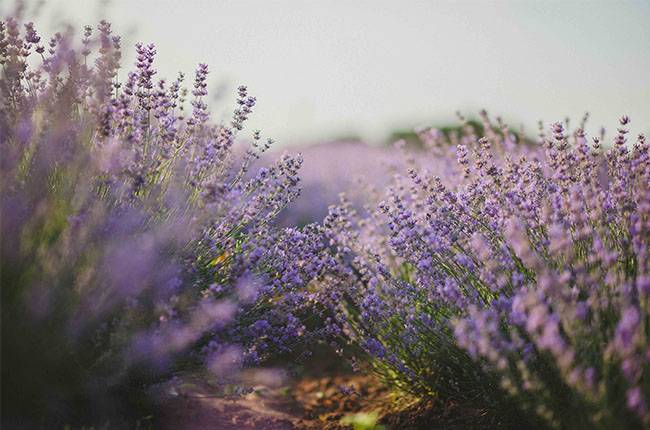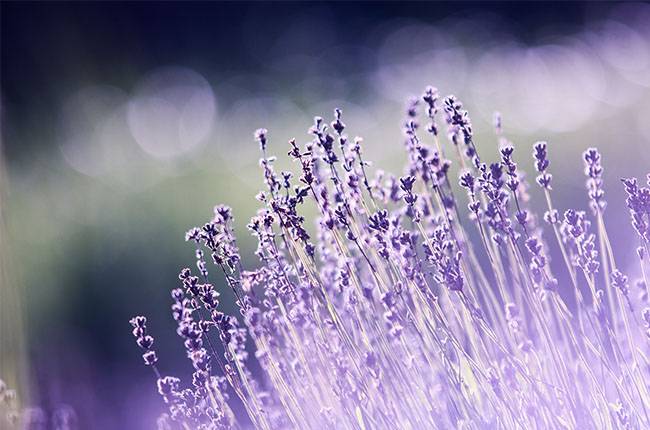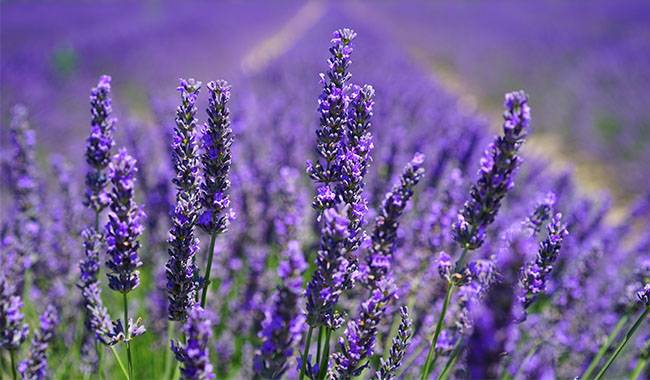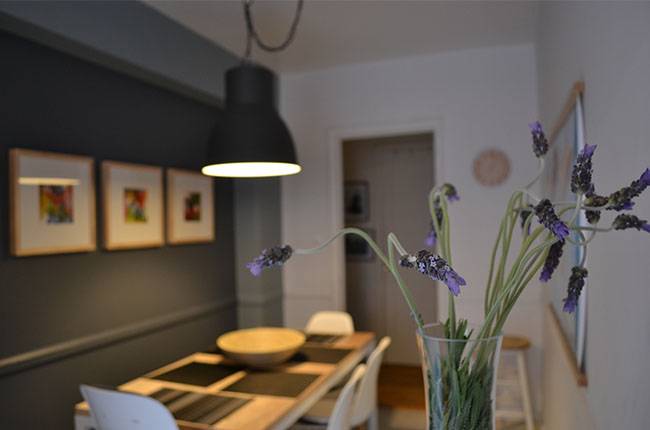
Lavender is an ornamental herb that grows wild in the Mediterranean and southern Europe. For the florist, it can be cultivated as a solitary shrub or as an ornament for alpine beds and borders. Also in flower beds, lavender has no rival.
It grows as a shrub without a stem in the middle. It belongs to the Yasnocot family. In summer the flowers form stylized spikelets. Its flowers come in white, blue, purple, and pink.
Once you see a pot of lavender in full bloom and smell its delicate scent, you will want to own this mountain flower from the southern Black Sea coast and enjoy its fresh, medicinal scent in your own home. Here’s an explanation for planting lavender in pots at home.
LAVENDER DESCRIPTION AND CHARACTERISTICS
Thermophilous lavender comes from the mild, warm climate of the Mediterranean and loves spacey, full sun. It is a low bush to 1m high with narrow silvery-green leaves and lavender flowers.
There are two colours: the English variety and French variety.
- In the English variety, the leaves are narrow and the purple inflorescences elongated. The English lavender is unpretentious, hardy and suitable for growing in open spaces.
- The French variety differs from the English variety in that the French variety has broader leaves, lavender inflorescences and shorter size. In cultivation, the species is more variable and the plant dies when temperatures drop to -15°C (5°F), so the species is mainly grown in pots.
Lavender is a shrub without a central labiate family. On the buds, it forms white, blue, purple or pink spikes. The name of the plant comes from the two Latin roots ‘lava’.
They say that the flower got its name because it was used in ancient times as an additive in baths. Lavender has a pleasant, light fragrance and is therefore often used as a perfume.
Some growers are convinced that lavender is a changeable plant and requires special attention. However, knowing a few secrets will allow you to expand on your own site without too much effort.
Home care also has certain functions and nuances if lavender is grown in pots. One of the main conditions is to choose a variety that is suitable for the room.
ADVANTAGES AND DISADVANTAGES OF LAVENDER
The advantages of indoor lavender are its fragrant scent during flowering and its soothing and soothing effect on headaches.
Lavender is an essential oil plant with many health benefits.
The flowers are used to prepare essential oils for use in medicine, aromatherapy, cosmetics and perfumery.
Lavender oil is used to treat burns, joint pain and as a massage oil to relax muscles and relieve muscle tension. It has strong antibacterial properties.
When growing flowers at home, they can be used by cutting and drying the flowering branches: for making scented sachets – aromatic pillows that add a delicate fragrance to linen products and repel moths.
To add to herbal pillow recipes that help to relieve spasmodic headaches and combat insomnia. As a refresher for shoes (put them on at night and they will remove unpleasant odours).
as a complement to green and floral teas; in cooking, added to baked goods, salads, vegetables and fish dishes.
The plant has no disadvantages, except for its intolerance to individuals with a strong bitter taste.
GROWING LAVENDER
There are several ways to grow lavender at home.
By cutting a plug
Cut a 10cm (3.93inch) long plug from an annual shoot and remove the leaves from the lower end. Place the cuttings in moist soil, cover with film to retain moisture and wait for roots to emerge. The plugs root easily.
Seeds
Before sowing, the seeds must undergo a stratification process, i.e. they are treated with cold water to increase germination. The seeds are placed in a moist substrate, covered with a plastic bag and placed on the lower shelf of the fridge for 1.5-2 months.
At the end of the stratification period, place the seed container in a bright, warm place until shoots appear. Dip the growing seedlings into the cups and then transplant them into pots as they grow.
Seedlings will flower within 1-2 years.
By dividing the bushes.
You can separate the parts of the bush growing in the garden and place them in pots for growing in the house.
Growing lavender in a potted culture requires certain rules to be followed.
The brightest spot is chosen, preferably a south-facing window, but a little shade is needed during the hottest midday hours of summer.
The soil should be light and nutrient-rich, consisting of 3 parts green leafy soil, 2 parts humus and 1 part sand, to which 1 tablespoon must be added.
wood ash or lime. When growing flowers in pots, there must be a good drainage layer in addition to standing water.
Lavender prefers calcareous soil, so it is advisable to add crushed eggshells to the pots.
VARIETIES OF LAVENDER
Growing beautiful lavender can be difficult for some growers. However, it is actually possible to grow plants without adding to the attention.
To do this you need to know certain secrets and then the lavender will grow without much effort from the gardener.
Before planting a shrub in a pot, you need to find out which variety of houseplant to choose.
When the right variety is chosen, the culture will not only bring about a healthy appearance but also original flowering results.
Today, experts count more than 20 varieties of lavender. They have different bush shapes, inflorescences of different heights and colours.
Certain species can only be grown in open ground. However, there are also some species that can be successfully propagated in special containers.
These include.
- Lavender broadleaf species (the second name is the French variety). This plant displays flowers of many colours.
- Toothed lavender shrubs are thermophilic plants, suitable for growing in pots only. The appearance is different from other soft silvery foliage. The inflorescence is large and consists of bright blue flowers.
By choosing lavender from these types, you can get a unique accent on your room’s décor with minimal effort spent on caring for the plant.
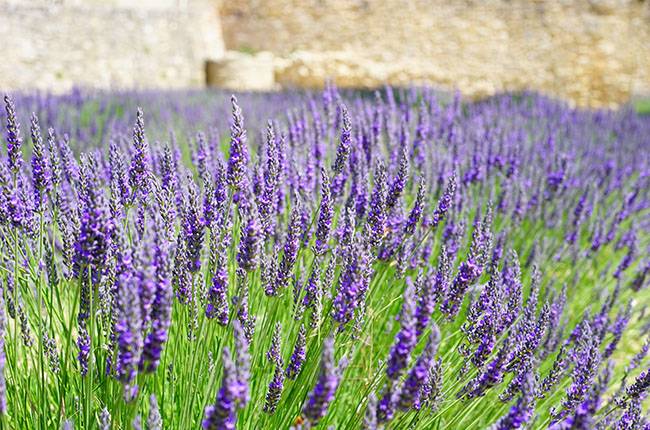
PLANTING LAVENDER IN POTS: CHOOSING A CONTAINER
When choosing a lavender pot, make sure you take into account the fact that the plant needs some space for its root system.
Lavender bushes support plenty of space – so you will need to buy a container no smaller than 30cm (11.8inch) in diameter.
If the pot is small, it may show when the plant is in flower. In a small container, the lavender is covered with pale flowers and florets.
This is due to the small pots lacking the nutrients the plants need. Containers should be 2 to 3 litres in capacity – smaller pots are not suitable for crops.
When planting lavender in pots, a 5-6cm (1.96-2.36inch) drainage bulb needs to be provided. This will protect the crop from flooding even if irrigation is not metered.
Another important criterion for choosing a pot is colour. It is best to buy a light-coloured container, as dark-coloured ones will get hot in the sun.
This will cause the soil to become comatose and dry out. Please note that when the roots get too hot, the condition of the lavender will deteriorate and may even cause the plant to die.
Before planting lavender in pots, please consider carefully its position in the room. We will tell you more about this below.
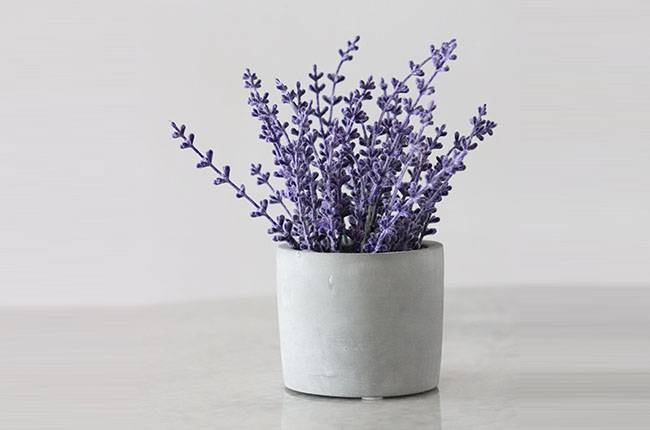
PLANTING LAVENDER IN POTS: LOCATION AND SUNLIGHT
Please note that it is almost impossible to grow lavender in the absence of sunlight. The plant has high lighting requirements.
If the culture is located in a room, it must be placed on a south-facing windowsill. In summer, experienced plant lovers place lavender on the balcony or even take it outside.
In winter, lavender requires additional lighting. When another lighting is organised, plants and glowing lights will be used. The most suitable daylight hours for lavender are no less than 10 hours.
PLANTING LAVENDER IN POTS: GROWING AND SOIL SELECTION
The ideal mixture for growing lavender is as follows.
1 part sand (gravel can be used)
1 part humus ;
2 parts of soil.
Some gardeners grow lavender in a special mixture of flowering plants purchased from specialist shops.
In this case, it is worth adding fine gravel to the soil to obtain optimum looseness. Ordinary garden soil is not suitable for lavender as it tends to compact when watered.
If you have the question “Potted lavender: how to grow it” in mind, it can be propagated from seed or rooted from individual cuttings. It can also be propagated by transplants.
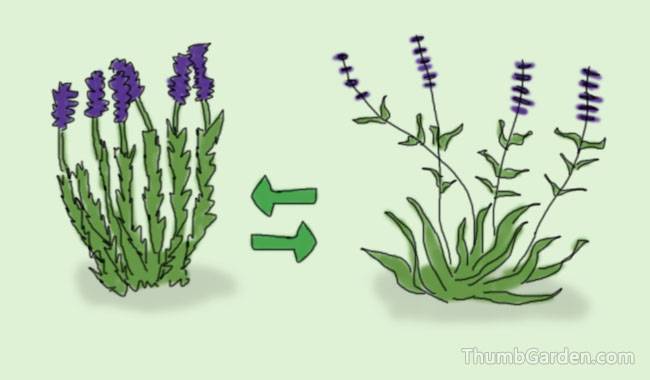
PLANTING LAVENDER IN POTS: CARE
Correct care of the lavender in your apartment is a guarantee of correct development and flowering. Any violation of the conditions of detention will immediately affect the appearance of the plant.
Lavender needs regular watering without over-drying the soil or flooding.
Irrigation water should be warm and steady. The soil in the pot should be kept moist and free from standing water. After watering, any excess water in the tray must be drained.
A feature of lavender watering is leaf moisture. Watering is carried out by water falling on the leaves and then flowing into the soil. During particularly hot summer months, additional spraying of the leaves is necessary to maintain humidity.
In spring and summer, lavender should be watered 2 to 3 times a week to prevent mud tile coma.
In the autumn, watering is reduced to 1 time in 2 weeks. In winter, when the plant is dormant, it should be watered every 30 days with a minimum of water.
Lavender needs regular feeding. Introduce them in liquid form every 2-3 weeks and combine with watering. Use a nitrogen-containing compound before bud formation begins.
Use a phosphorus-potassium mixture from the start of bud formation until the end of the growing season. During this period, nitrogen is excluded from the follow-up fertiliser, as excess nitrogen can lead to an increase in leaf mass, which is detrimental to flowering.
Lavender needs to be pruned to form a correct spherical shape. Buds washed out from the main crown are pruned with garden shears to give the bush a rounded shape. Two formative prunings are carried out during the growing season.
- in spring – before flowering.
- in late summer or early autumn at the end of flowering.
In summer, hygienic pruning is carried out during flowering. The aim is to remove damaged, dry buds and wilted flowers. This procedure gives the lavender bush a tidy appearance and stimulates the formation of new flowers.
In spring, it is recommended to transplant the lavender into a large container. This process is carried out once a year as the root system grows rapidly and becomes narrow in a small pot.
Replanting is also aimed at replacing the soil with a more nutritious one.
When replanting, the old soil is not removed from the roots. Carefully remove the lavender from the old pot with the soil and place it in another pot 3-4cm (1.18-1.57inch) larger in diameter than the previous one. The empty space created along the edge of the roots is covered with fresh soil.
As the shrub ages, from about the fifth to the sixth year, the shrub is divided into several parts. This step rejuvenates and rejuvenates the plant. Once divided, the lavender will start to grow and flower more vigorously.





